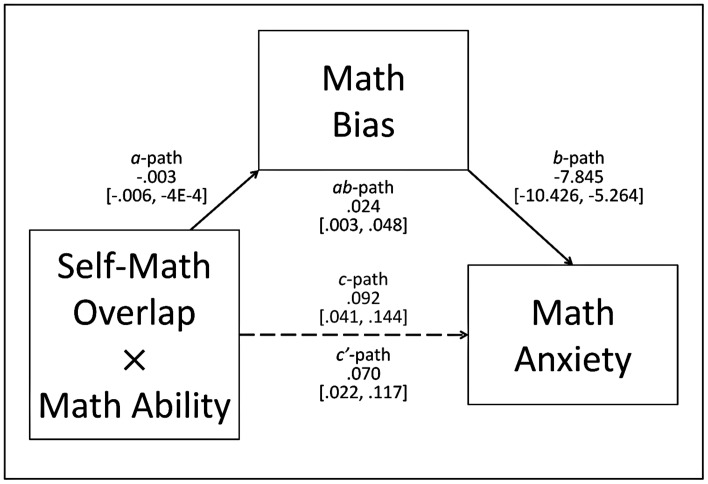FIGURE 3.
Math bias was a significant partial-mediator of the interactive effect of self-math overlap and math ability on math anxiety, indicating that the relationship between the interaction of self-math overlap and math ability on math anxiety can be explained at least partially by levels of math bias. In particular, having higher self-math overlap and lower math ability is associated with lower math anxiety through higher self-serving math biases. Beta-coefficients and 95% confidence intervals from a model including self-literature overlap, self-friend overlap, trait anxiety, working memory capacity, literature bias, and gender as covariates are displayed. Note that when confidence intervals do not include zero, this indicates statistical significance.

